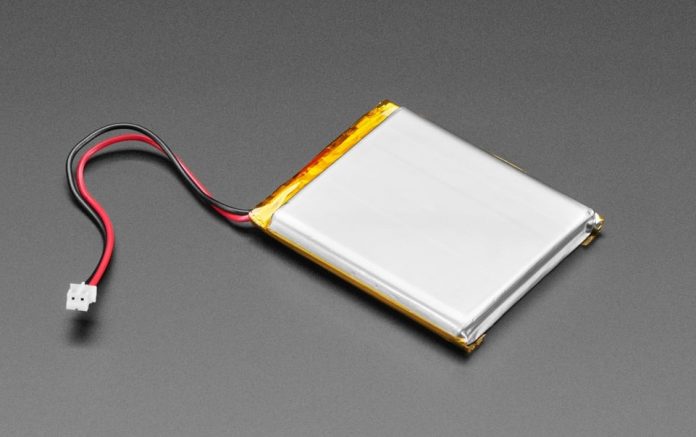
Lithium Polymer (LiPo) batteries are popular for powering various electronic devices due to their high energy density and lightweight. However, unlike traditional batteries, LiPo batteries require specific handling and care to ensure safety and optimal performance. This guide delves into the key aspects of LiPo batteries, encompassing their voltage range, capacity, discharge rates, and charging considerations. It also emphasizes crucial safety measures to prevent potential hazards.
Understanding LiPo Battery Specifications
Each LiPo battery is comprised of individual cells. Each cell operates safely within a voltage range of 3.0V (minimum) to 4.2V (maximum). The nominal voltage, which represents the average voltage of a healthy cell, is 3.7V. The total voltage of a LiPo pack is determined by the number of cells connected in series. For instance, a 3S (3-cell) pack will have a voltage of 3 cells x 3.7V/cell = 11.1V.
The capacity of a LiPo battery is measured in mAh (milliampere-hours). It signifies the total amount of current the battery can deliver over a specific time. A 2000mAh battery can theoretically provide 2000mAh (2 Amps) of current for 1 hour.
The discharge rate specifies the maximum safe current a LiPo battery can discharge continuously. It’s expressed as a multiple of the battery’s capacity (C). A 2000mAh battery with a 30C discharge rating can safely deliver 30 x 2A = 60 Amps continuously. LiPo batteries may also have a burst rating, indicating the maximum current they can withstand for short bursts (typically 10 seconds). This is useful for applications with a high initial current draw, such as motorized weaponry in robots.
Key Takeaway: When selecting a LiPo battery, ensure its continuous discharge rating can meet the maximum current draw of your device.
Charging LiPo Batteries Safely
LiPo batteries require specialized chargers capable of balance charging to ensure each cell reaches the same voltage. This prevents overcharging and maintains battery health. Investing in higher-quality chargers that charge through the main leads and balance leads can expedite the process.
- Charging Rate: LiPo batteries should be charged at a rate no higher than 1C. Modern LiPo packs may tolerate higher charging rates; however, consult the manufacturer’s specifications for optimal charging practices. Following a 1C charging rate for a 2000mAh battery translates to a maximum charging current of 2A.
- Balance Charging: Each cell in a LiPo battery pack should ideally reach the same voltage at the end of charging. This necessitates a dedicated LiPo charger with a “balance charging” function. A LiPo battery typically has two main power cables (positive red and negative black) and a balance lead connecting each cell. Some chargers utilize only the balance lead for charging, while more advanced models can charge through the main leads while simultaneously monitoring and balancing each cell via the balance lead for a faster charging process.
Safety Precautions for LiPo Battery Users
- Low Voltage Alarm: During operation, the voltage of each cell shouldn’t fall below 3.0V to prevent cell swelling and permanent damage. A low voltage alarm is a safety device that connects to the LiPo battery’s balance lead and monitors individual cell voltages. When a cell reaches 3.0V, the alarm will sound, prompting you to stop using the battery and recharge it.
- Charging Sacks: LiPo batteries must always be charged within a flame-retardant LiPo charging sack in a safe location, away from flammable materials. Generally, LiPo battery fires only occur in cases of damage, improper charging, or external shorts.
- Handling: LiPo batteries are high-power cells; puncturing them can release harmful gases or even ignite a fire. Handle these batteries with care to prevent accidental punctures. Exercise caution when handling LiPo batteries, as punctures can release harmful gases or even fire. Properly securing LiPo batteries within the robot is also essential for safety. Mount them securely while allowing easy removal and charging. Event organizers often mandate removing LiPo batteries from the robot during charging for added safety.
- Storage Charge: Most LiPo chargers offer a “storage charge” function. Storing LiPo batteries fully charged can damage them. A storage charge reduces the voltage of each cell to around 3.8V, compared to 4.2V in a fully charged state.
Key Takeaways
Users can ensure optimal performance and safety by understanding the voltage range, capacity, discharge rates, and charging considerations of LiPo batteries. Always adhere to safe charging practices, including using a LiPo charger, employing a charging sack, and implementing low-voltage alarms. Handle LiPo batteries carefully and store them at an appropriate charge level using the storage charge function on your LiPo charger. Following these guidelines will ensure a positive experience when working with LiPo batteries.






















